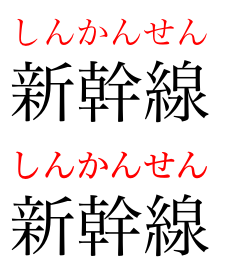-
Notifications
You must be signed in to change notification settings - Fork 682
New issue
Have a question about this project? Sign up for a free GitHub account to open an issue and contact its maintainers and the community.
By clicking “Sign up for GitHub”, you agree to our terms of service and privacy statement. We’ll occasionally send you account related emails.
Already on GitHub? Sign in to your account
[css-fonts-4] I18n self-review checklist #5030
Comments
|
Text decoration
Not handled here. Addressed in CSS Text 4 Line Decoration: Underline, Overline, and Strike-Through in particular the text-decoration-skip shorthand and its sub-properties
Not handled here. Addressed in CSS Text 4 Text Underline Position: the text-underline-position property |
|
Vertical text In general, the requirements below are handled in CSS Writing Modes 4, Vertical Writing Modes rather than this specification. However, in this specification:
|
|
Setting box positioning coordinates when text direction varies The requirement below is handled in CSS Writing Modes 4, Vertical Writing Modes rather than this specification.
|
|
Ruby text annotations In general, the requirements below are handled in CSS Ruby Layout Module Level 1 rather than this specification. However, in this specification,
In other words, this works in conjunction with CSS Ruby, not as an alternative to it.
|
|
Miscellaneous The following items do not seem to relate to the functionality of this specification; they are dealt with in, for example, CSS Text 3 line breaking
|
|
Other notable items
|
|
Thanks for this @svgeesus. Nicely done. I'll ask the i18n WG (including myself) to look at the details in the spec for items that you've highlighted, and we'll raise separate issues for any comments that arise, if any. |
|
There are one or two issues already open (eg. for generic font families). I added just one other small one at #5295 Otherwise this all looks good to me. Thanks. |
|
Thanks for the report, @r12a.
|
|
Fwiw, here is a list of open issues for css-fonts-4 that the i18n WG is currently tracking: |
Closing, as individual issues have been filed separately. |

Short i18n review checklist is here
If the spec (or its implementation) contains any natural language text that will be read by a human (this includes error messages or other UI text, JSON strings, etc, etc),
This specification is not used to generate text.
If the spec (or its implementation) allows content authors to produce typographically appealing text, either in its own right, or in association with graphics.
Yes, this is the main focus of this specification. See following comments.
If the spec (or its implementation) allows the user to point into text, creates text fragments, concatenates text, allows the user to select or step through text (using a cursor or other methods), etc.
No
If the spec (or its implementation) allows searching or matching of text, including syntax and identifiers
In general no. However, see Localized name matching for matching on localized font names. For example, an implementation must match on
굴림체(Korean) as well asGulimChe(Latin)If the spec (or its implementation) sorts text
No
If the spec (or its implementation) captures user input
No
If the spec (or its implementation) deals with time in any way that will be read by humans and/or crosses time zone boundaries
No
If the spec (or its implementation) allows any character encoding other than UTF-8.
Characters are processed as Unicode codepoints. Character encoding is not dealt with in this specification. The
unicode-rangedescriptor defines the set of Unicode codepoints that may be supported by the font face for which it is declared. This serves as a download hint (don't download fonts that won't cover the text you are trying to render) and also a way to disallow use of a font for codepoint ranges that you don't want to be used.If the spec (or its implementation) defines markup.
No
If the spec (or its implementation) deals with names, addresses, time & date formats, etc
No
If the spec (or its implementation) describes a format or data that is likely to need localization.
No
If the spec (or its implementation) makes any reference to or relies on any cultural norms
Yes, some font choices are informed by cultural norms such as the association of particular typefaces with expected usage (formal, playful, archaic, governmental, religious)
The text was updated successfully, but these errors were encountered: